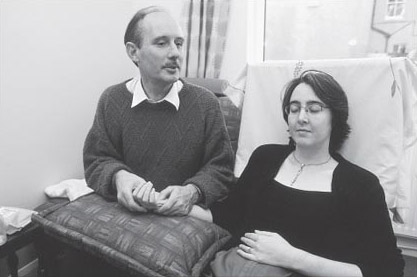5.3 Disability and communication
Click to read: Disability and communication: listening is not enough
Activity 24, Barriers to communication
0h 30m
Read the chapter on ‘Disability and communication: listening is not enough’, by Sally French and John Swain, to the end of the section ‘Experiencing disabling communication barriers’. As you do so, make brief notes on what the authors identify as the barriers to two-way communication.
Discussion
The authors locate the barriers to effective two-way communication within the power relationships between professionals and clients, and they start from a social model of disability that understands the unequal treatment of disabled people as built into organisational structures and ‘into the language, communication and client–professional discourse’. This context means that identifying barriers to communication recognises the complexities of the process and the diversity of disability. Among the specific barriers they cite are attitudinal barriers, access issues, and a lack of emotional response by professionals.
This explanation offers a sense of disabled people's position in society as being both socially produced and also socially constructed. For example, poor access to buildings can increase inequality in a very practical sense, while at the same time the discourse that disabled people are ‘less able’ constructs and reinforces this inequality. The authors go on to advocate what they term ‘inclusive’ communication, which you will explore in the next activity.

Click to read the chapter from: Towards Inclusive Communication
Activity 25, Making communication effective
0h 30m
Read the rest of the Chapter, from ‘Towards inclusive communication’ to the end. Make a list of the principles by which inclusive communication can be achieved.
Discussion
Course testers noted that French and Swain list the following principles.
-
Participation in the planning and evaluation of policy, provision and practice.
-
Accessible communication that is based on the views and needs of disabled people, who have been consulted at every stage of the process.
-
Diversity and flexibility by listening to disabled people and allowing them to take control.
-
Human relationships that include a shared sense of humanity.
-
Use of inclusive language that involves more than a recognition of terms that are exclusive and the thinking that underpins the commitment to inclusion.
Did you note all these points? At its simplest French and Swain are advocating that the way forward is for service providers to actively listen to the needs of service users who are disabled. Many disabled people have become politically active in order to be ‘heard’ as people in their own right. The next activity is an opportunity to explore some examples of this.
OpenLearn - Diversity and difference in communication
 Except for third party materials and otherwise, this content is made available under a Creative Commons Attribution-NonCommercial-ShareAlike 4.0 Licence, full copyright detail can be found in the acknowledgements section. Please see full copyright statement for details.
Except for third party materials and otherwise, this content is made available under a Creative Commons Attribution-NonCommercial-ShareAlike 4.0 Licence, full copyright detail can be found in the acknowledgements section. Please see full copyright statement for details.
